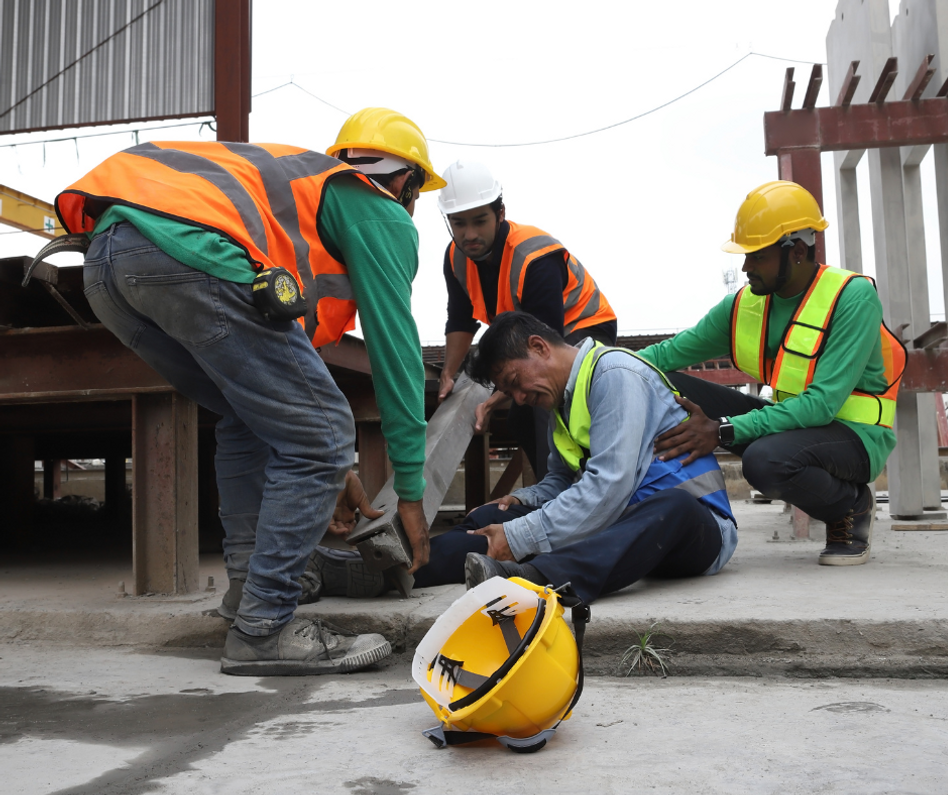Lessons from Real Fall Accidents: What Went Wrong and How It Could Have Been Prevented
Falls are one of the leading causes of injuries and fatalities in the construction industry. By analyzing real-world incidents, we can identify critical safety failures and learn how to prevent similar accidents in the future. Below, we examine a few real fall accidents, what went wrong, and the key takeaways to improve jobsite safety.
Case Study 1: Inadequate Guardrails and a Fatal Fall
What Happened:
A construction worker was working on a second-story scaffold when he lost his balance and fell over the edge. The scaffold lacked proper guardrails, and the worker was not wearing fall protection. Tragically, he sustained fatal injuries upon impact.
What Went Wrong:
-
The scaffold did not have the required guardrails in place.
-
The worker was not equipped with personal fall protection.
-
There was no proper fall prevention training.
How to Prevent It:
-
Always ensure that scaffolding systems have guardrails installed at the appropriate height.
-
Require all workers at heights to wear proper fall protection, such as harnesses and lanyards.
-
Conduct regular safety training sessions on fall prevention and proper scaffold usage.
Case Study 2: Misuse of a Ladder Leading to a Fall
What Happened:
A painter was using an extension ladder on an uneven surface without securing it. As he reached out too far to the side, the ladder tipped over, causing him to fall and suffer multiple fractures.
What Went Wrong:
-
The ladder was not set up on stable ground.
-
The worker overreached instead of repositioning the ladder.
-
No spotter or securing system was used to stabilize the ladder.
How to Prevent It:
-
Always ensure ladders are placed on stable, even ground or use ladder levelers when necessary.
-
Follow the “three points of contact” rule when using a ladder.
-
Use ladder stabilizers or have a coworker hold the base when working at height.
Case Study 3: Overloaded Scaffold Collapse
What Happened:
A masonry crew was working on a multi-level scaffold when it suddenly collapsed. The investigation revealed that the scaffold was overloaded with materials far beyond its weight capacity, leading to structural failure.
What Went Wrong:
-
The scaffold was not designed to hold excessive weight.
-
There was no proper weight distribution.
-
The crew did not check the scaffold’s load capacity before use.
How to Prevent It:
-
Always check the manufacturer’s weight limits and adhere to them.
-
Distribute weight evenly and avoid overloading a single section.
-
Conduct routine inspections to ensure scaffolding remains structurally sound.
Final Thoughts: The Importance of Proactive Safety Measures
Every fall accident can be traced back to preventable safety oversights. Employers and workers must take a proactive approach by implementing proper fall protection systems, conducting regular safety training, and enforcing compliance with OSHA regulations.
At Southwest Scaffolding, we provide high-quality scaffolding and safety equipment designed to keep workers secure on the job. By learning from past accidents, we can create safer work environments and prevent future tragedies.
Stay safe, stay informed, and always prioritize fall protection!
Recent Posts
-
How Scaffolding Impacts Project Scheduling and Deadlines
When people think about project delays, they usually blame weather, material shortages, or labor iss …Dec 15th 2025 -
Working With Scaffolding in Winter
Winter may slow construction down, but it doesn’t stop it, and when scaffolding is involved, cold-se …Dec 8th 2025 -
When Renovation Turns Risky: Lessons from the Tai Po Fire and the Role of Scaffolding Safety
The recent fire in Hong Kong’s Tai Po district has shaken the global construction and safety communi …Nov 30th 2025




